Trastevere in Rome arguably stands as the city’s most achingly charming neighborhood, inviting you to wander the curved streets that form a labyrinth of medieval lanes. Atmospheric bars, cafes, and restaurants flank these streets—perfect for anyone considering what to do in Rome for a day or searching for authentic nightlife. Yet Rome’s Trastevere offers more than just culinary mirth and merriment. You will also discover super-star historic sites here—one of the city’s oldest churches, the best and most underrated Bernini sculpture, and an early-Renaissance architectural masterpiece. Whether you plan to experience Rome in a day or seek things to do tonight, Trastevere stands out as a must-visit. Need we say more?
We’ll take you on a guided tour through Trastevere and its top sites. However, let’s first dive into a brief history of this gorgeous Roman neighborhood.
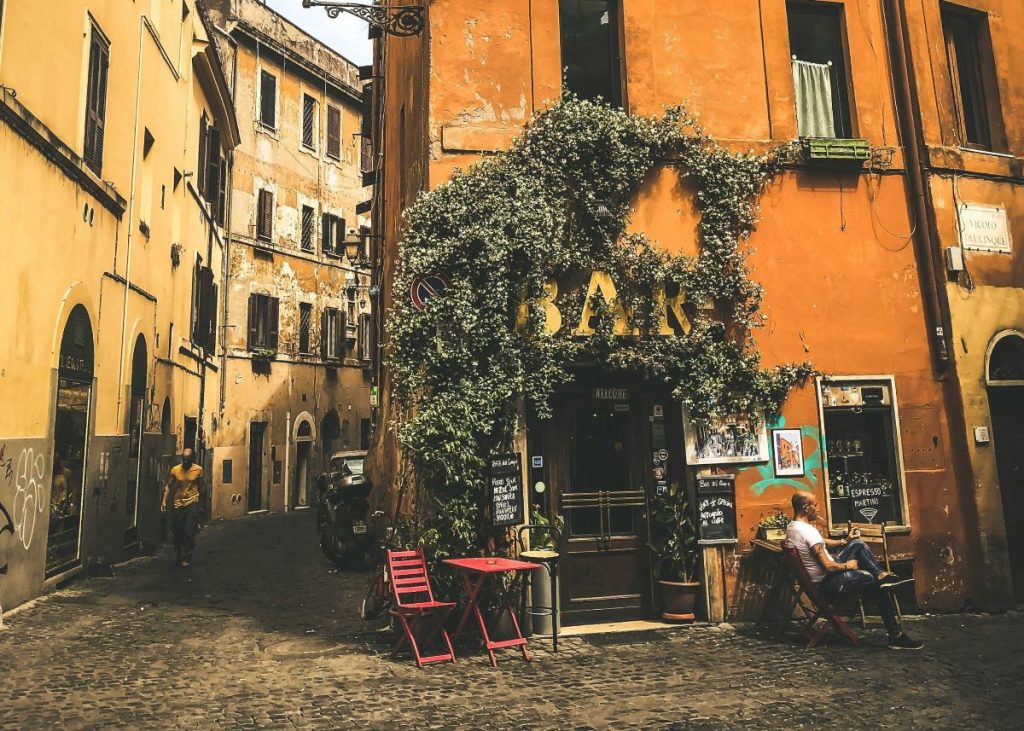
Like a postcard, isn’t it? Photo credit: Daniele Salutari
Discovering Trastevere in Rome
The Etruscans settled Trastevere about 2,700 years ago, beginning its long history. During the Roman Republic, immigrants—mostly Syrians and Jews—made this area their home. Only during the time of Emperor Augustus did Trastevere officially become part of the city of Rome.
Because the neighborhood sits on the other side of the Tiber River, it evolved differently from central Rome. This, along with its considerable ethnic diversity through the Middle Ages, meant that the people of Trastevere, the Trasteverini, built their own identity. In fact, their distinctiveness mirrored the way pre-hipster Brooklynites felt about their borough.
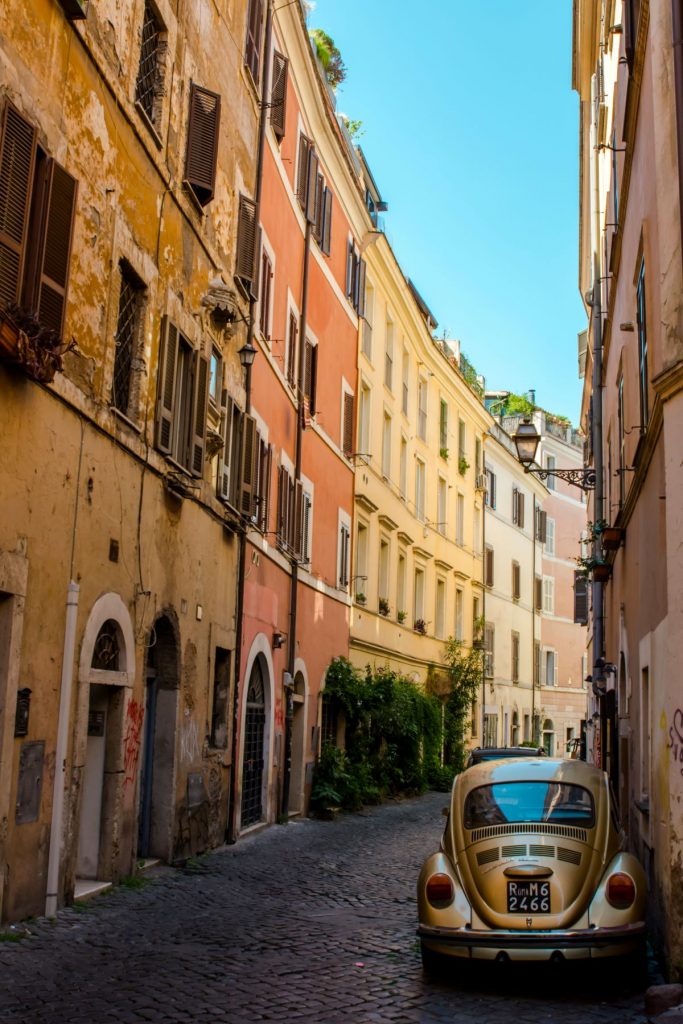
Again, this neighborhood is just so darn photogenic. Photo credit: Faruk Kaymak
Artists flocked to the neighborhood in the second half of the 20th century, and today you will find it bustling with international student life. Several universities—including John Cabot University, the American Academy in Rome, Thomas More College of Liberal Arts, Pratt Institute School of Architecture, and The American University in Rome—operate in or near Trastevere.
When you visit Trastevere to lose yourself in its ambient, winding streets, you will also want to see these historical sights. If you’re looking for things to do in Rome that blend history, culture, and vibrant energy, Trastevere allows you to experience it all in just a day.
A Stroll Through Trastevere’s Top Sights
Basilica of Santa Cecilia
Saint Cecilia, an aristocratic girl, embraced Christianity before Roman authorities accepted it. In the year 230, her executioner struck her neck three times, but failed to behead her. She died three days later. When church officials opened her tomb in 1595, they found her body incorrupt.
This quaint church commemorates Saint Cecilia, the patron saint of music. You will not want to miss Stefano Maderno’s sculpture of Cecilia, which depicts her as she appeared when her tomb was unearthed in the late 16th century.
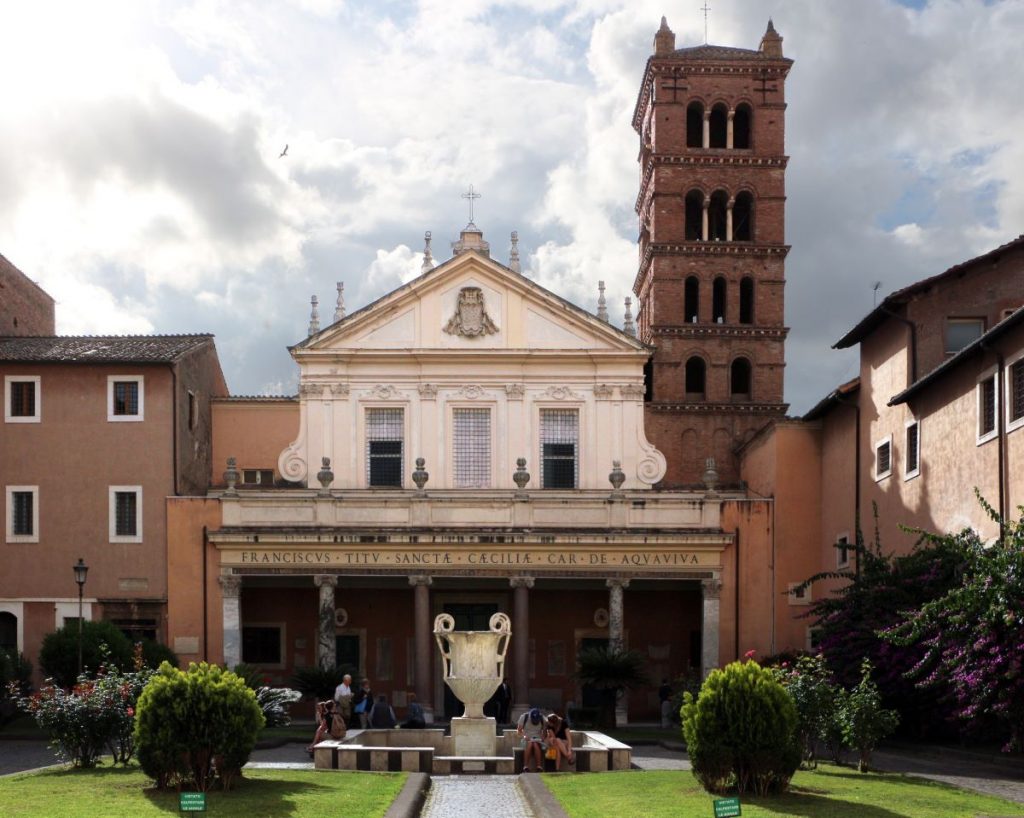
Make sure you go inside this church. The statue of Saint Cecilia really is amazing. Photo credit: Sailko
Basilica of Santa Maria
Constructed in 340, Santa Maria in Trastevere became the first church in Rome dedicated to the Virgin Mary. Most of what you see today dates from the 12th century onward. You will immediately notice the 22 tall granite Ionic and Corinthian columns that separate the nave from the aisles—builders repurposed these from the Baths of Caracalla. The decorative ceiling features a dramatic depiction of the Assumption of Mary.
Traveler’s tip: If you need a break from the city’s ancient glory, why not check out some of Rome’s contemporary art museums?
Relics fans will appreciate that the church houses the Holy Sponge, reportedly used to offer Christ hydration during the Crucifixion. For what it’s worth, Santa Maria Maggiore across town also venerates a brown sponge that claims the same title.
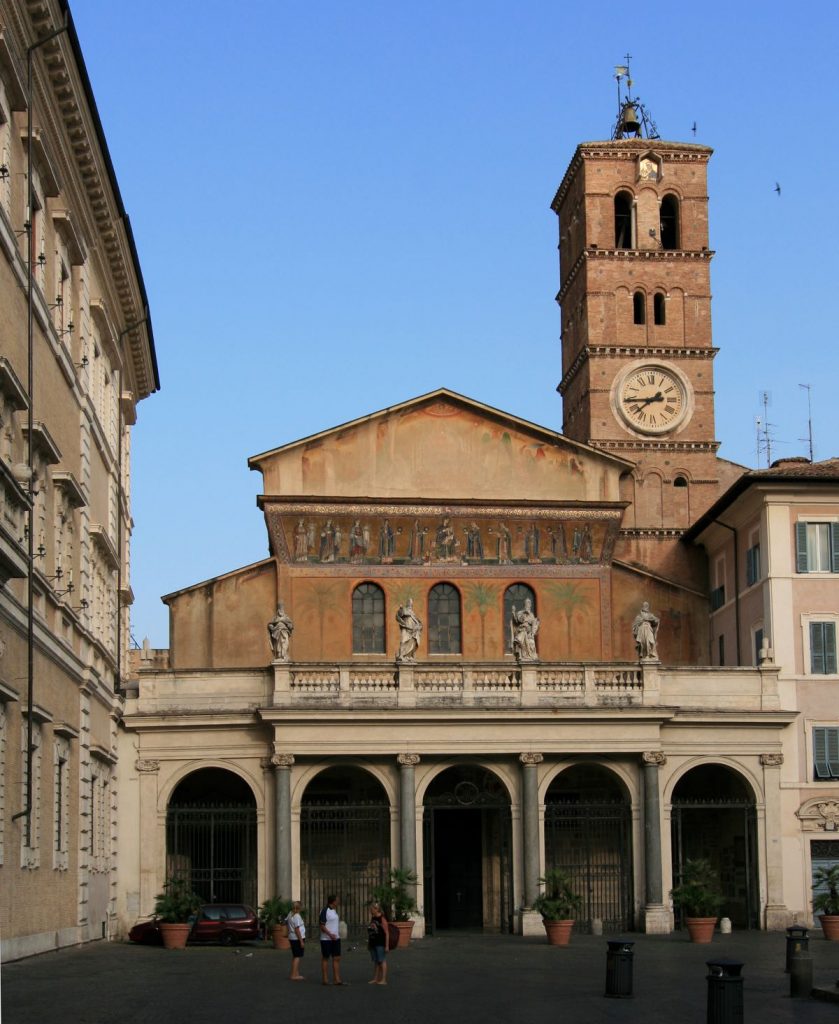
If you love ancient churches, Trastevere is definitely the place for you. Photo credit: Jensens
Church of San Francesco a Ripa
You will want to visit the Church of San Francesco a Ripa for a single, breathtaking reason: the stunning and dramatic Bernini sculpture, “Beata Ludovica Albertoni.” Even though Bernini’s “The Ecstasy of Saint Therese” across town attracts more attention, you will count yourself lucky if you see Ludovica Albertoni, who appears in such a state of rapture she could make parishioners blush.
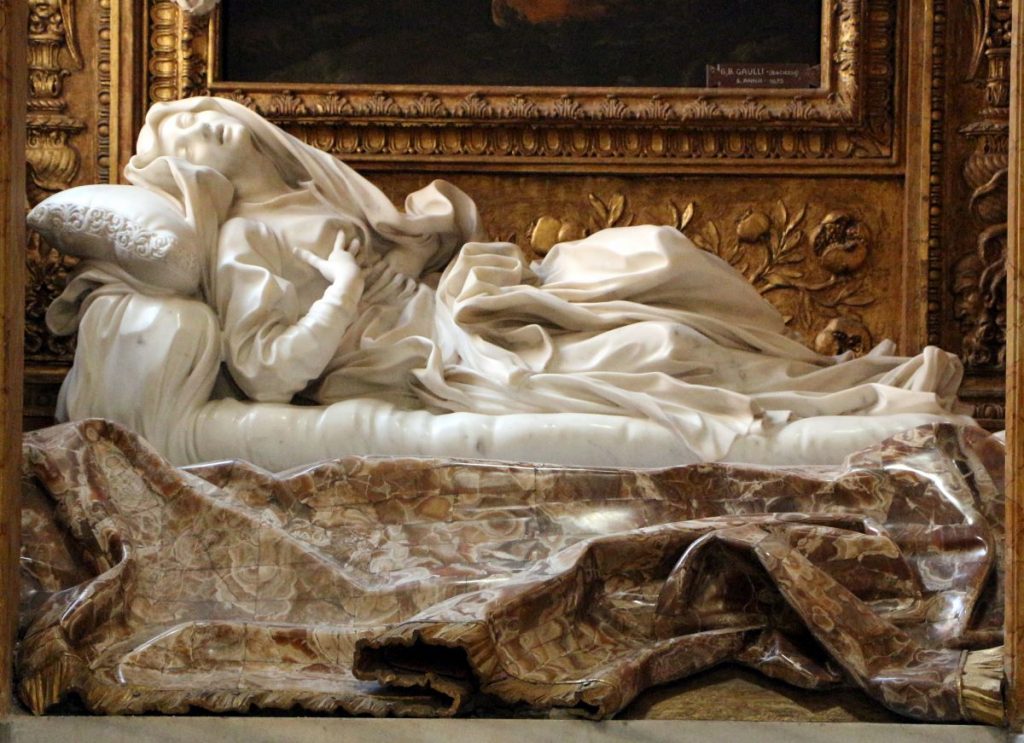
The amount of artistic talent to create this masterpiece is mind-blowing. Photo credit: Wikipedia
Gianicolo Hill
Often called the eighth hill of Rome, Gianicolo Hill invites you to escape the Italian capital’s chaos. Towering umbrella pines cover the hilltop park. While you won’t find a long list of sites here, you should stop by the grand Fontana dell’Acqua Paola, a 17th-century fountain celebrating the reopening of a Roman-era aqueduct.
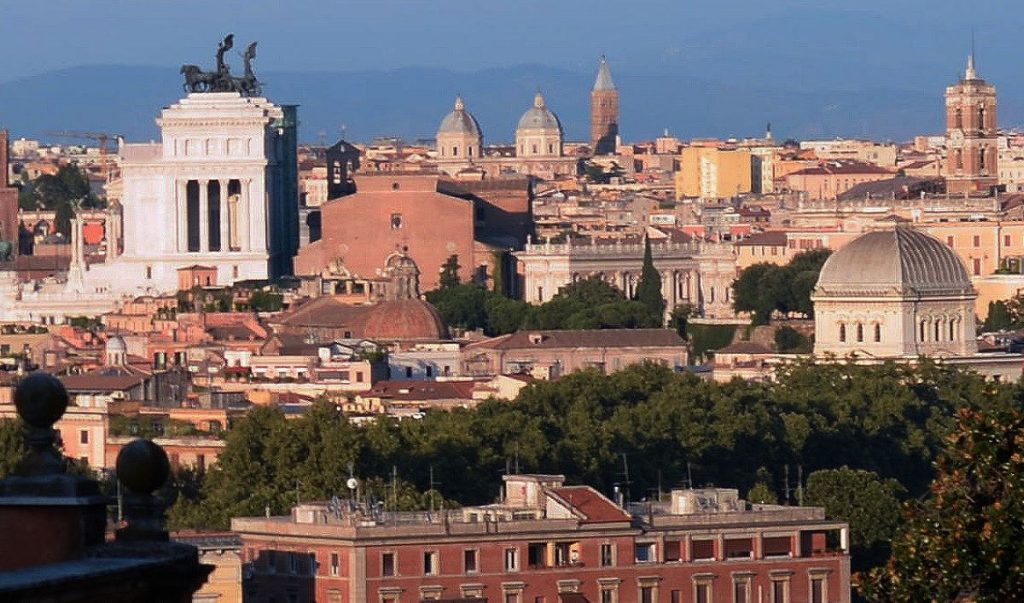
The views from the Gianicolo Hill are worth the trek up. Photo credit: Blazej Kocik
Isola Tiberina
Located in the middle of the Tiber River, Isola Tiberina once dazzled with its marble cladding. The Romans recognized the island as ship-shaped, so they covered it with marble and added giant obelisks as masts, hoping to evoke the boat of Aesculapius, the Greek god of healing. The island’s legacy as a healing place continues, as you will still find a small hospital and a pharmacy there. You can stroll across the Ponte Fabricio—Rome’s oldest still-functioning bridge, built in 62 B.C.E.—to access the island.
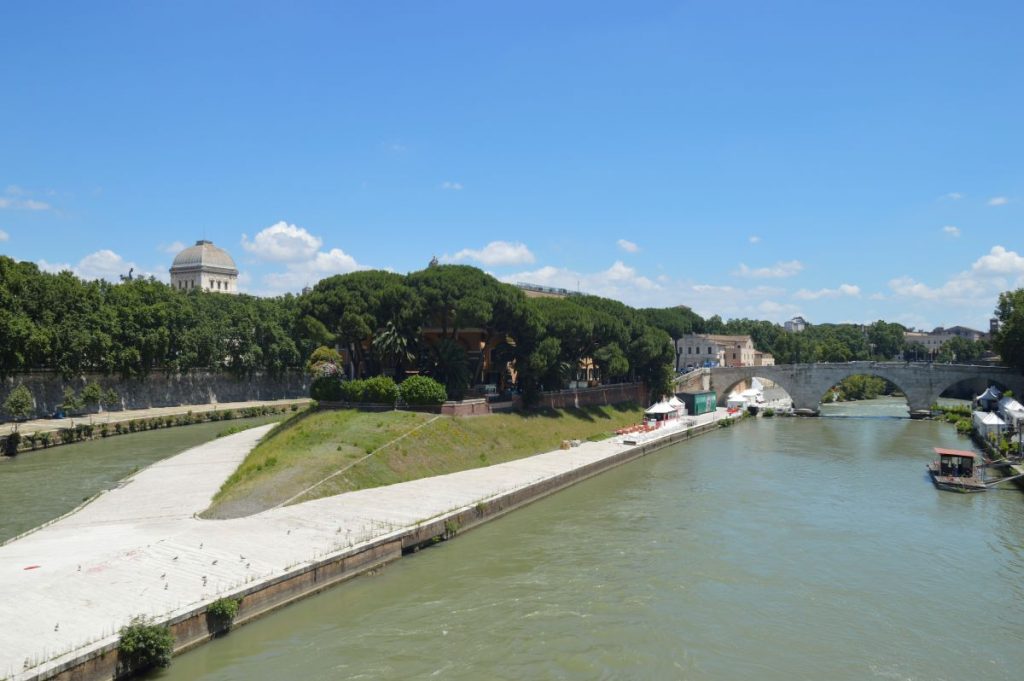
This tiny swath of land is a nice place for a quick stroll. Photo credit: Wikipedia
Traveler’s tip: If you’d like to learn more about Rome’s most fascinating sites, take a look at some of our best Rome Walking Tours. From touring the Sistine Chapel alone to a fabulous day trip to the Amalfi Coast, we’ve got you covered.
On the way up (or down) Gianicolo, make sure you glimpse the Tempietto, an early-Renaissance architectural wonder. Located within San Pietro in Montorio on the eastern slope of Gianicolo, this church purportedly marks the spot where Saint Peter was crucified. Donato Bramante designed the Tempietto in the 15th century, and this masterpiece profoundly influenced architecture by signaling a renewed appreciation for antiquity, over Gothic aesthetics.
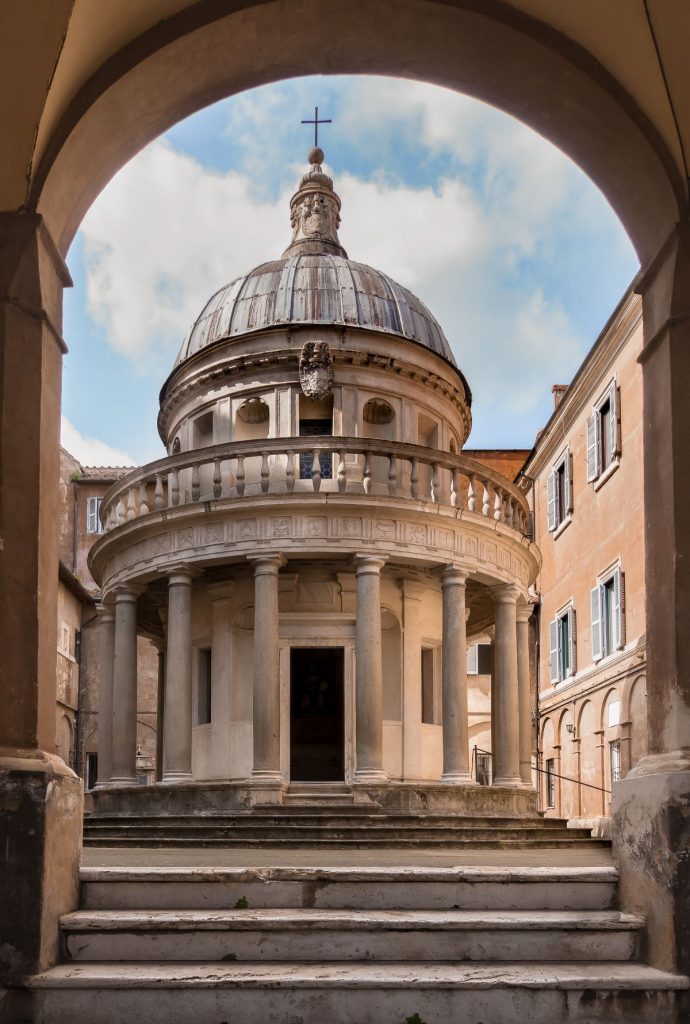
The design of the Tempietto represented a sign of things to come in the world of architecture. Photo credit: W.W.Thaler
Villa Farnesina
Built at the beginning of the 16th century, Villa Farnesina stands as a testament to the financial extravagance of the Renaissance era. Agostino Chigi, a wealthy banker from Siena, constructed this villa. The interior intrigues you with its history, but most visitors arrive to admire the frescos in the loggia painted by Raphael.
Not only did Chigi entertain princes, popes, and potentates here, but he also wowed guests with his extravagant parties. At the end of each dinner, he ordered his servants to dramatically toss all the expensive cutlery and dinnerware into the Tiber River while his guests watched in disbelief. However, hidden nets under the water would catch the items, allowing Chigi to repeat the spectacle for new audiences.
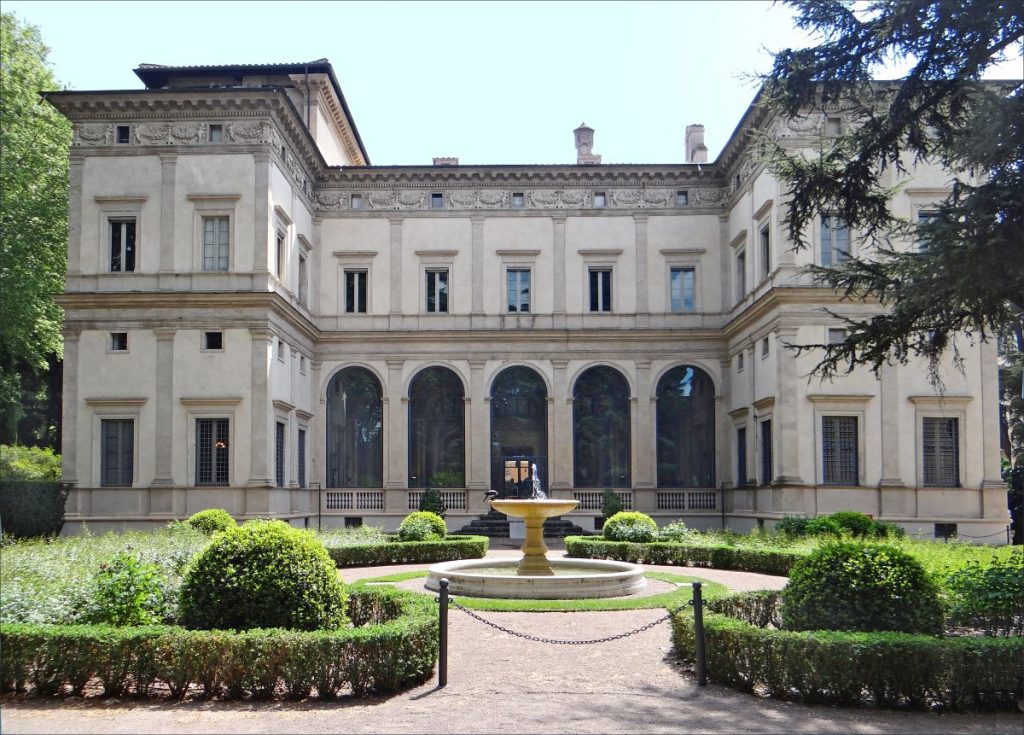
Packed with history, the ornate villa is definitely worth a visit. Photo credit: Jean-Pierre Dalbéra
Highlights: What Makes Trastevere Unmissable
When you visit Trastevere, make sure to enjoy:
- A stroll through atmospheric, medieval lanes that buzz with energy both day and night
- Sampling authentic Roman cuisine at vibrant trattorias and lively street-side cafes
Additionally, you will want to:
- View the magnificent mosaics and columns inside Santa Maria in Trastevere
- Discover the hidden gem of Bernini’s “Beata Ludovica Albertoni”
- Experience panoramic city views from Gianicolo Hill
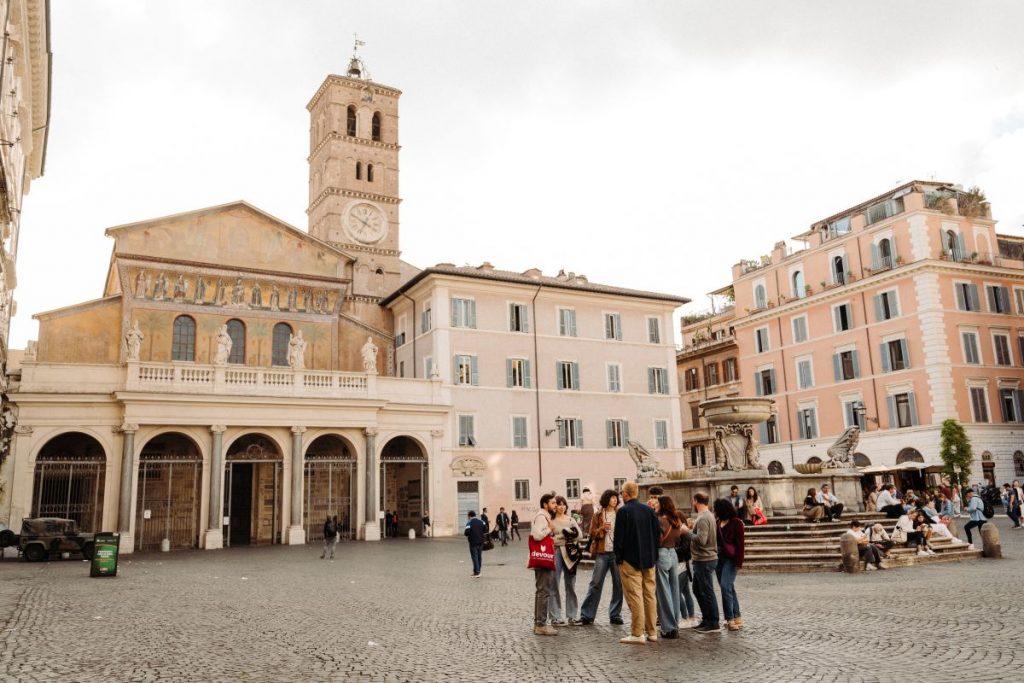
FAQ: Things to Do in Trastevere, Rome in a Day or Night
What are the best things to do in Trastevere if I only have one day in Rome?
If you experience Rome in a day, you should explore Trastevere’s historic sites such as the Basilica of Santa Maria, Basilica of Santa Cecilia, and the Church of San Francesco a Ripa. Wander the atmospheric streets, soak up the local nightlife, and sample authentic Roman cuisine at the many lively cafes and restaurants.
What should I do tonight in Trastevere?
Trastevere’s nightlife draws both locals and visitors. After you visit a few historic sites in the afternoon, enjoy an aperitivo in Piazza Santa Maria, dine at a traditional trattoria, and then check out the many bars or live music venues. As evening progresses, the neighborhood buzzes with energy, making it the perfect spot for your night out in Rome.
Is Trastevere suitable for a quick visit or should I spend more time there?
Trastevere suits both a quick day trip and a longer, leisurely exploration. Its mix of historic sites, vibrant streets, excellent food, and lively nightlife allows you to tailor your visit to any schedule.
What makes Trastevere’s nightlife unique?
Trastevere’s nightlife blends old-world charm with local energy. The narrow streets fill with people as the evening goes on, who head to wine bars, cocktail lounges, and late-night trattorias. Whether you want a quiet drink or a bustling night out, Trastevere offers one of the best nightlife scenes in Rome.
If you’re intrigued and want to learn more about Trastevere—how could you not?—then sign up for a Trastevere Food Tour where expert guides not only take you on a deep dive into the history of this fascinating neighborhood but also introduce you to its delicious aperitivo culture.
